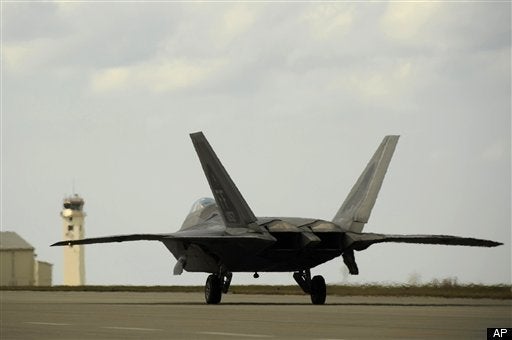
I ran into a major DC budget analyst on the street today, who asked me, "How did you like the F-22 vote?" "A two-legged stool cannot stand," was my reply.
What happened to the F-22 was both rare and predictable. Nearly 30 years ago I wrote a book called The Iron Triangle: The Politics of Defense Contracting, which described, in some detail, the influences that come to bear in making major DOD weapons program decisions.
The theory -- and the reality -- are pretty simple. For a major program to emerge, thrive, and survive, it takes basically three players: the service that wants and will advocate for the program, a contractor for whom the program is major business, and members of Congress who either sit on the key committees that decide on the program or represent the district or state where the program, or parts of it, are made. In a word: the Iron Triangle for the program.
If one of those legs falls away, it makes the program vulnerable. This doesn't happen very often, but it does happen. It happened 32 years ago to the B-1 bomber, when President Carter canceled the program and the Air Force leg of the stool disappeared. That left the contractor and the Congress fighting for a program the administration did not want. By a close margin, Carter was able to win a "rescission" vote in the Congress ending the production funding. (It revived three years later when the third leg was restored by the Reagan administration.)
So it went with the F-22. When Secretary of Defense Robert Gates withdrew support from the F-22, he clearly persuaded the Air Force to withdraw the military leg under the F-22 stool. When the Air Force went public about its official view, the stool started to wobble.
Even a second leg became less sturdy. Lockheed-Martin, the contractor, announced it would not lobby (hard) for the program, perhaps because it has many other equities in other programs at DOD. This reduced the pressure on the third leg, the Congress. Key members -- some from key states and districts, some from key committees -- fought hard for the program. But a two-legged stool is weak, and a one-and-a-half legged stool even weaker.
The pressure for the stool to fall was accentuated by the President's Statement of Administration Policy (SAP). SAPs occur on every bill, and usually contain revealing language about how much the President cares. In this case, the SAP was very clear: the President would veto the bill. (Not the same for the F-35 alternate engine -- there the recent SAP said his advisors would recommend he veto the bill -- a softer, more distancing approach.) And the nail in the coffin was the follow-on communication from the White House and DOD just before the Senate vote, reiterating the veto threat.
Given the weak stool, even the SAP might have been enough. Together they were fatal for the program, especially early in the administration with the president's credibility on the line. The news that the House appropriators are now likely to fall away from their initial support for the program is icing on the cake; the stool has fallen.